Best Places to visit in the Netherlands not Amsterdam
To truly experience the best of the Netherlands and its rich history you need to get out beyond the Capital city of Amsterdam and explore the surrounding areas. The Netherlands may be flat but it is diverse and interesting and yes windmills still exist. From Rotterdam and its UNESCO world heritage site listing to bicycling from one end of the country to the other, there are many places to visit in the Netherlands. You may have visited Amsterdam but want to know where to go in Holland other than Amsterdam? Here are 19 tourist attractions you should visit outside of Amsterdam.

What is the difference between Holland the Netherlands and Dutch?
Let’s first clarify the name of the country – it’s the Netherlands. Holland refers to the two areas of Noord and Suid Holland – Amsterdam is located in North Holland. The people of the Netherlands are considered Nederlanders. Dutch is a term that is relatively little used in the Netherlands except by English speakers as it is a term used for both the Netherlanders and the Germans.
One place I’ve always wanted to explore is the Hague and fellow blogger Jasmine has written a brilliant article on The Best Things to Do in The Hague – Holland’s Royal City by the Sea and now it is most definitely on the bucket list.
What do you call someone from the Netherlands?
To keep it short and simple you use the term Dutch to describe the people of the Netherlands, Holland when referring to the provinces of North and South Holland and the Netherlands when talking about the country as a whole.
Most tourists simply head towards Amsterdam and don’t bother to see the rest of the country. You can see Amsterdam in one day and then head out of the city, the Netherlands has much to offer and Amsterdam is just one tiny part of this beautiful country. Why not look for some hidden gems? When you are in the Netherlands be sure to check out the food scene, it may surprise you.
This is a collaborative article with travel writers contributing their favourite places to visit outside of Amsterdam. The list includes day trips from Amsterdam to places like Gouda and Rotterdam and great Dutch cities that take time to explore and take your time to see.
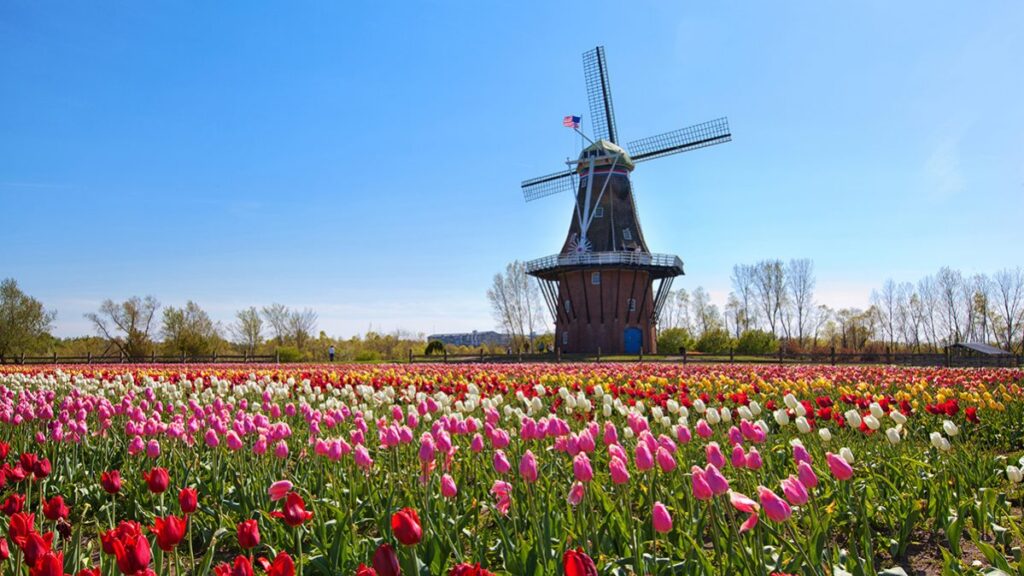
The Best time to visit the Netherlands
I tend to travel in the winter months or the shoulder season so that is what I consider to be the best time to visit the Netherlands. Having said that one year I visited in the midst of the worst winter weather in Europe now known as the Beast from the East.
A Brief Dutch History
Julius Caesar found the Netherlands which was then inhabited by Nervii, Frisii and Batavi tribes who are of German origin. After a number of years, the Franks invaded the country during the 4th century until the 8th century, and by Charlemagne from the 8th to the 9th century. After almost 7 centuries, the Spanish invaded and conquered the Netherlands and influenced the country by spreading Christianity.
In 1568, people of the Netherlands revolted against the Spanish rule lead by William of Orange. This is because King Phillip II suppressed the people’s political liberties which led to the people building their own Protestant movement. In 1579, the 7 northern provinces of the Netherlands formed their own union named United Provinces of Netherlands. After almost a hundred years of colonization, Spain granted independence to the Dutch in the year 1648.
During the Thirty Years War from 1618 to 1648, the Netherlands gained maritime power because of its strategic geographical location. Moreover, it has gained commercial influence in Europe and its colonies.
Best Places to visit in the Netherlands
1 Kinderdijk
One of the most beautiful places in the Netherlands and accessible by a short ferry ride from Rotterdam lies what is arguably the most quintessential Dutch village in all of Holland, Kinderdijk, where windmills are still a fact of everyday life for the inhabitants. Although this patch of traditional Holland lies relatively close to a major city and has a UNESCO World Heritage listing to its name, it is surprisingly unassuming and noticeably lacking in tourists (at least, it was on the day I visited).
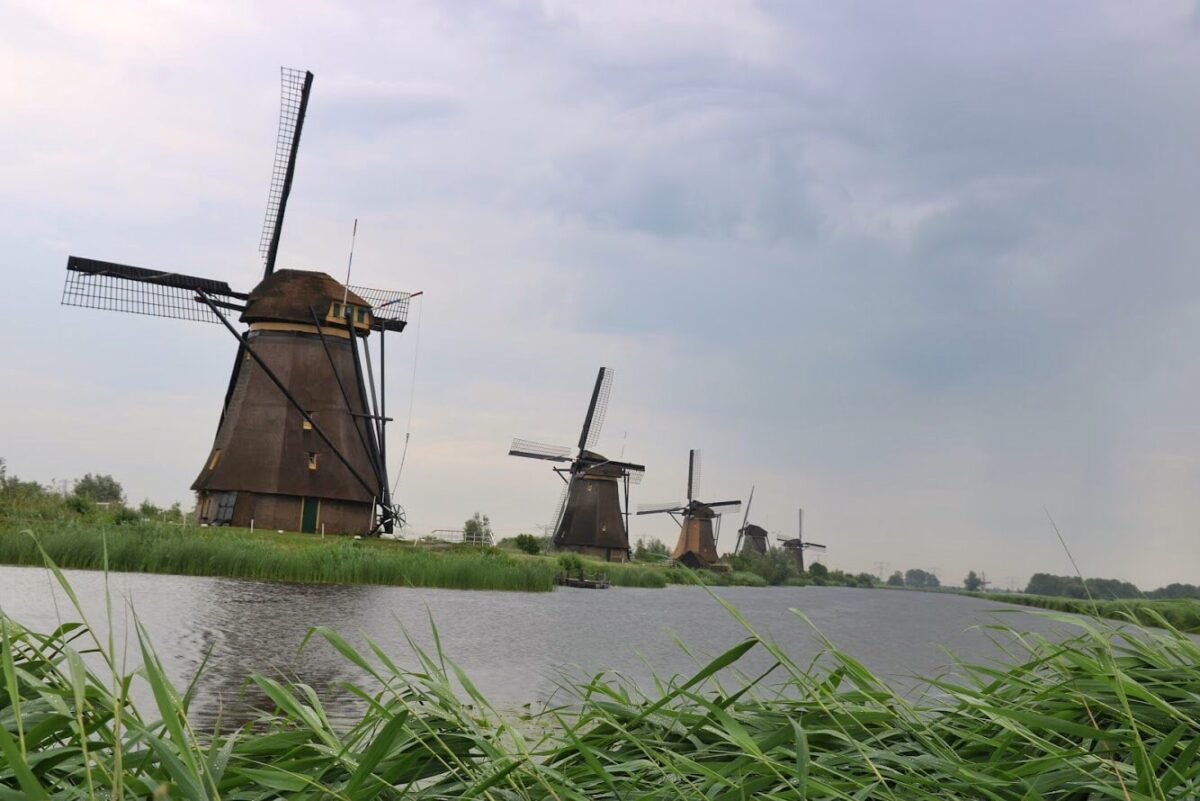
The windmills here are not just for show, millers and their families still work and live in these wooden Dutch icons, working to pump water and living off the land. The windmills have been standing proud at Kinderdijk since 1740, so there is a proud tradition and heritage to this part of the Netherlands and showcases the country’s agrarian roots.
What people may not know about windmills is that they are not all the same. The mills at Kinderdijk are not grain mills; they are simply there to prevent flooding and drain the land.
A visit to Kinderdijk permits not only a walk amongst the 19 giant wooden mills but there is also an opportunity to enter one or two of the mills to see what life used to be like for millers living there in the 1700s as well as see modern-day millers at work.
I was amazed to learn that millers still wear the traditional wooden clogs to this very day and it’s easy to spot a working mill, as the clogs are lined up outside where the millers have removed them to enter the mills without trudging clay and mud inside.
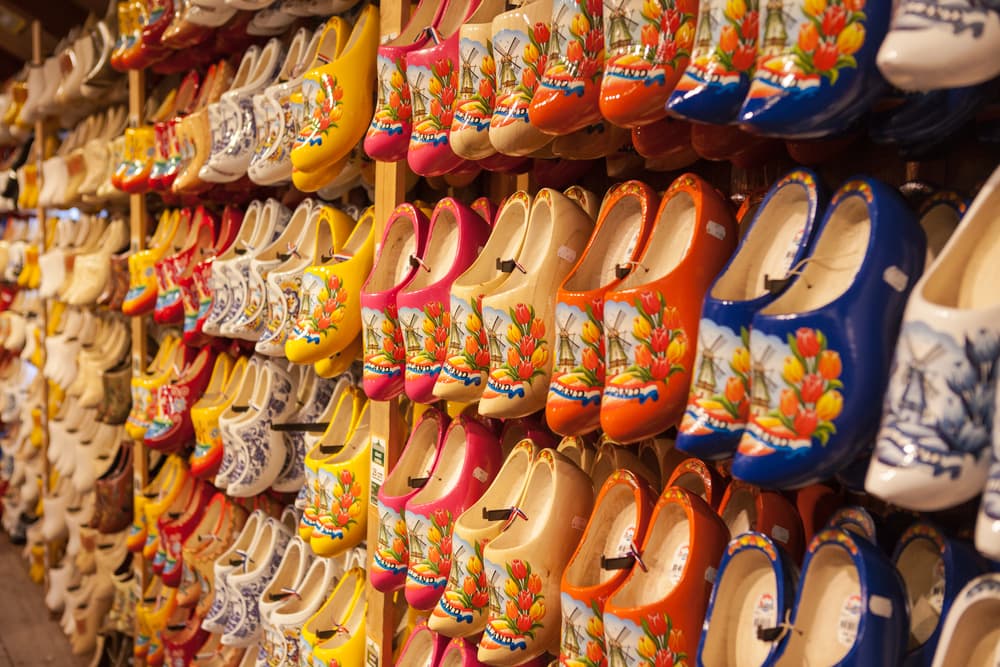
Booking online for your Kinderdijk experience currently saves you 1 Euro (instead of 8 Euros, you’ll pay 7. There are nearby hotels, but if you also plan on visiting Rotterdam, it might be best to base yourself there and take a ferry out for a day trip. By Emma of EmmaJaneExplores
Learn what authentic Dutch foods to eat when you visit the Netherlands
2 Leeuwarden
Just a two-hour train ride outside of Amsterdam lies the quaint little town of Leeuwarden. In all honesty, I had never heard of Leeuwarden before I decided to visit my friend who happened to live there. But I’m so glad I did.
We started off our day by eating HUGE pancakes with dollops of ice cream on a boat that just stayed docked on the side of a canal. I thought it was such an interesting experience. While I had eaten meals on a boat before, the boat was always moving. This one simply stayed in port, which meant that we could get off and on whenever we wanted.
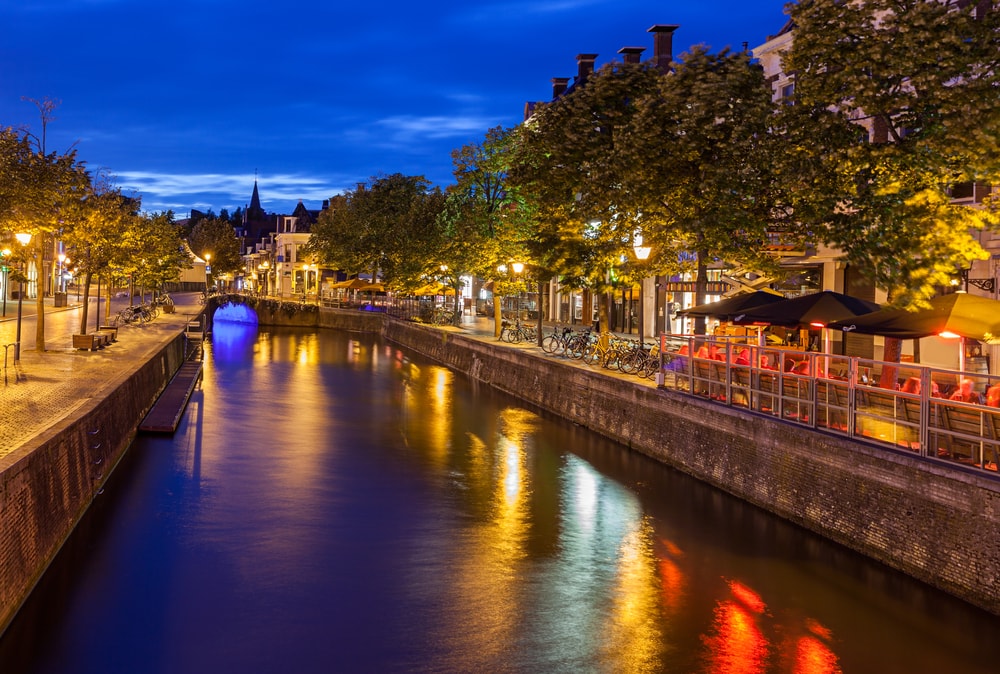
After we (unsuccessfully) attempted to finish our giant pancakes, we stumbled across a leaning tower called Oldehove. In all honesty, I think it was leaning more than the famous Leaning Tower of Pisa because it was quite the struggle to climb up to the top. But the stunning views of the city were worth it.
We stayed on top of the Oldehove for nearly half an hour before heading to another restaurant, where we simply sat, relaxed, and talked for a couple of hours. It was easily my favourite part of the day. We sat on a little picnic table on a bridge over a canal, ordered some drinks, and tried some local foods. We caught up on each other’s lives while eating some bitterballen (a rice-and-meat ball) and kibbeling (bite-size bits of fried fish).
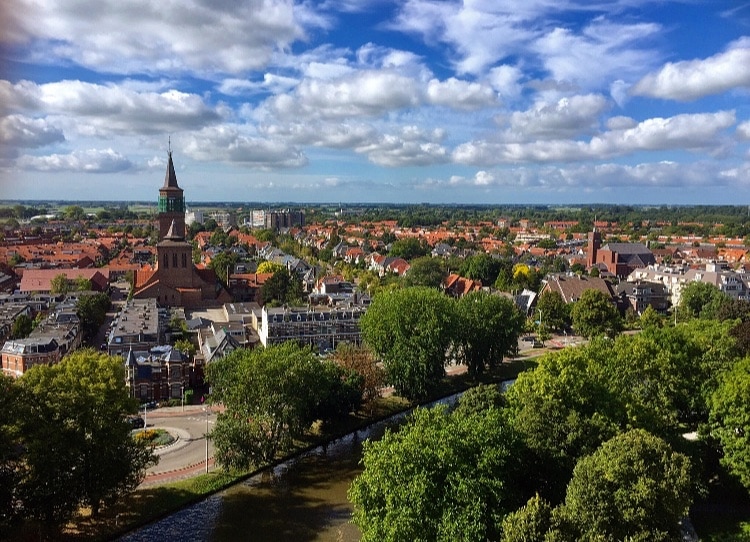
The city wasn’t filled with thousands of people. We were probably the only tourists in the city that day. Instead of trying to check a bunch of “must-sees and dos” off of a list, we just wandered to find what adventures awaited us. By Sarah at Borders and Bucket Lists
3 Haarlem
Haarlem, the capital of the province Noord-Holland, is a lively city with a long history. Only 15 minutes by train from Amsterdam, it’s the perfect day trip when you’re staying in the Dutch capital. Small Amsterdam is what they call Haarlem sometimes. Historic buildings and canals, but with a population of 158.000 people a lot less busy and touristy than Amsterdam (which has about 838.000 inhabitants).
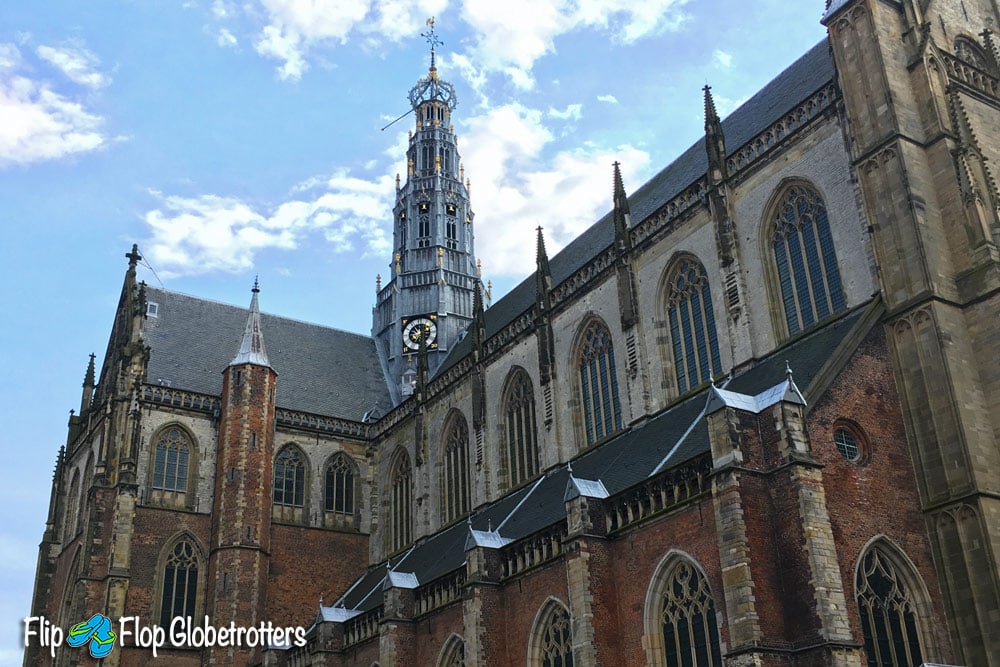
One of Haarlem’s most important landmarks is the Grote Kerk or St. Bavo Church on the Grote Markt (big market square) in the city centre. Even if you’re not religious, it’s worth visiting this late Gothic cross-basilica because of its architecture and history.
The river Spaarne crosses Haarlem’s centre and if the weather is good, renting a motorboat is a great way to explore this lovely city. Or, do like the Dutch and rent a bike! There are bike paths all across town. Alternatively, you can ride your bike to the beach at Zandvoort and Bloemendaal or to the tulip fields near Lisse.
Haarlem is also a great place to soak up some culture. Admire the weird and wonderful at the 18th-century Teylers Museum, the Dutch Masters at the Frans Hals Museum or contemporary art at De Hallen.
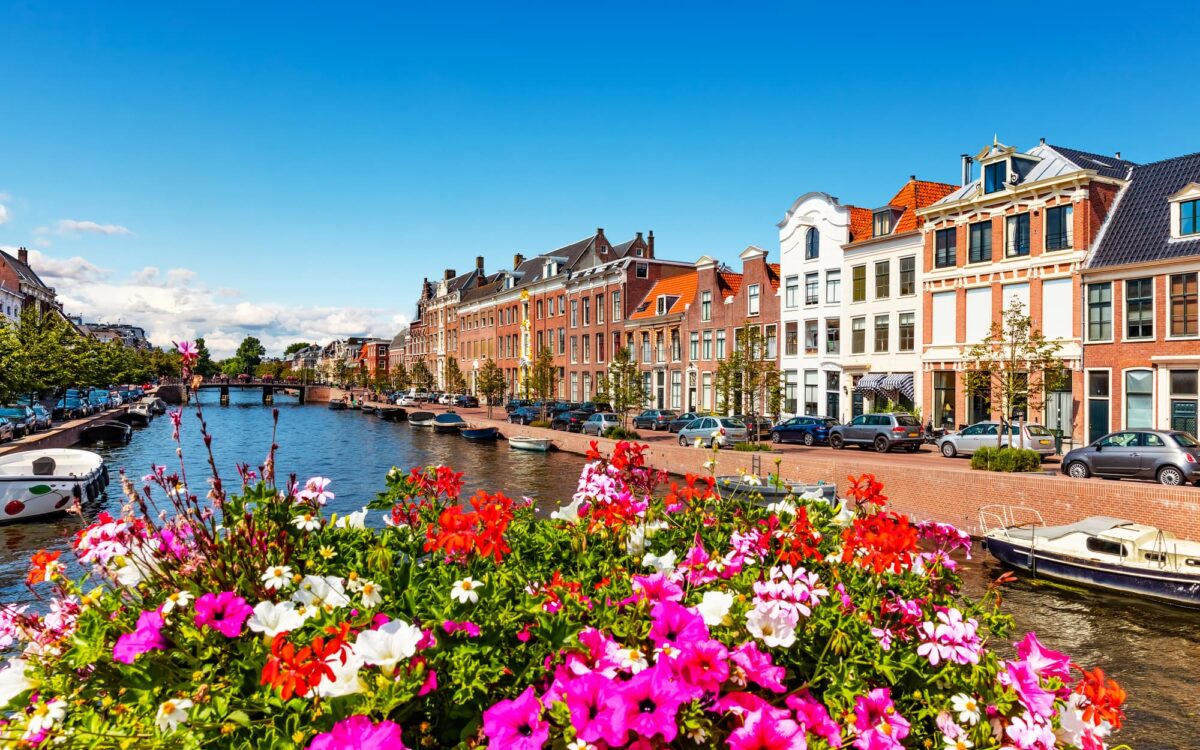
Shopping fans and foodies will love Haarlem. It was named the Netherlands’ best shopping city numerous years in a row. You’ll find all the major shopping chains, but also lots of small independent shops and boutiques. The Grote Houtstraat is the main shopping street. All around the Grote Markt, there are smaller streets with shops, bistro bars and restaurants. Whatever you fancy eating, you will find it there, from Thai to Mexican and from tapas to sushi. The perfect way to end a lovely day in Haarlem. By Lisa at Flip Flop Globetrotters
4 Texel
When in the Netherlands, make sure you look further than Amsterdam. One place that for sure needs to be on your list is Texel – the Dutch island that will surprise you with its white-sand beaches and idyllic scenery.
Texel is the first of the West Frisian Islands and can be easily reached from Amsterdam, either by car or by public transport via Den Helder. From Den Helder, you need to take the ferry to the island. The best way to explore Texel is either by bike or by walking.

When in Texel, make sure you visit the small village of Den Hoorn – it’s super cute and looks as if the time has stopped there – sheep grazing on the meadows, quaint houses and sand dunes. If you are into fine dining Den Hoorn has its very own Michelin-star restaurant – Bij Jef where they are using only local and seasonal products.
Another lovely place to visit is Den Burg – the main city on the island – with fisherman houses, tiny streets, and nice restaurants. It’s perfect to walk around and have a beer at one of the many cafés. Make sure you try the local Texel beer. My favourite one is Skuumkoppe.
For the most amazing views go to De Cocksdorp and climb the lighthouse. You will be mesmerized by the view!
If you are a nature lover, Texel won’t disappoint you either, as the island is a paradise for the birds. Take a walk along the white sand beaches or go for a small hike in the Dunes of Texel National Park.

Texel is for those who love slow travel and want to escape the hectic of city life. On Texel, you will find peace and you will reconnect with nature and possibly with yourself. By Daniela of Ipanema Travels
5 Waterland
Waterland is a municipality in the province of North Holland north of Amsterdam. The region of Waterland comprises of several historic fishing villages set in a picturesque open countryside about 30 minutes bus ride from Amsterdam central. These quaint fishing villages of Waterland located in tranquil surroundings with a common vista of grazing cattle, lush green meadows, and pretty wooden cottages are a time warp.

The popular villages of Waterland are Marken, Volendam, and Edam. The must-visit attractions in these villages are the wooden shoe factory in Marken, a tour of cheese processing in Volendam and the historic 16th-century house in Edam. There are several restaurants and cafes in the villages where you can buy something to eat and drink. One of the best souvenirs which you can take back home from these villages is the wooden shoes and wooden carved tulips.
You can just wander through the villages or even go biking in the charming alleys of these villages exploring the lovely landscapes. All the villages are well-connected by public transportation which makes for an easy day trip from Amsterdam. The ticket office at Amsterdam Central issues day passes that can be used all through Waterland. By Rashmi & Chalukya of Go Beyond Bounds
6 Laren
Affectionately called “The Beverly Hills of Amsterdam” the village of Laren just 33 kilometres from Amsterdam’s Central Station is a must-see for a peek into how the other half lives. A wander through the old town centre will delight those seeking a calm escape from Amsterdam’s crowds, as well as those on the hunt for quiet tree-lined parks, quirky shops, and storybook multi-million Euro homes.
The Singer Laren is one of the big draws here, one of the few museums with full accessibility in mind. Visitors are encouraged to take their time meandering through the permanent and rotating exhibits, enjoy a coffee or snack in the sculpture garden, or take in a show in its 400-seat theatre.
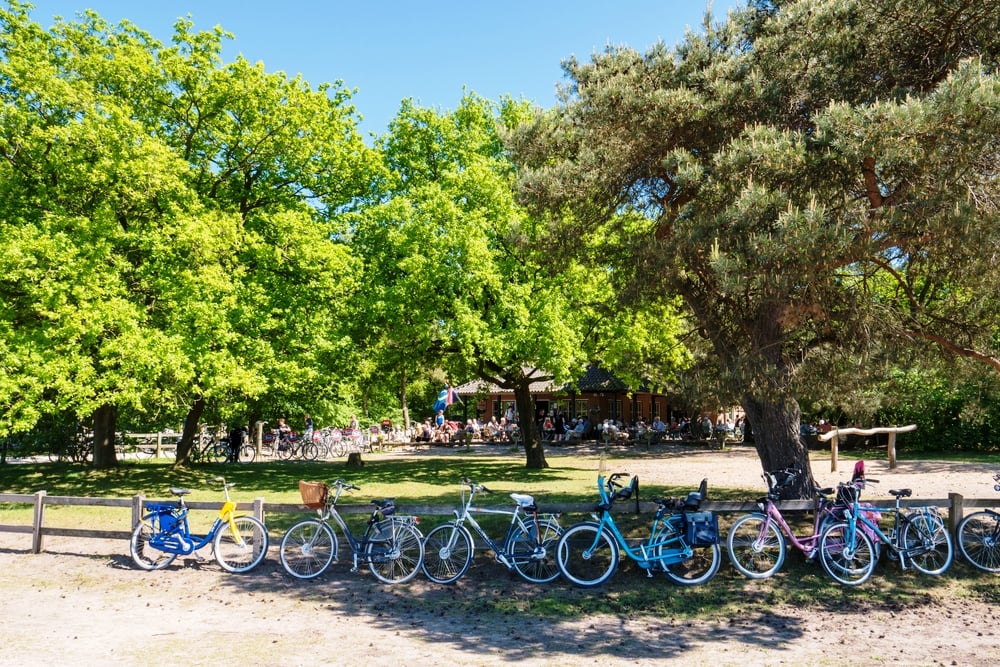
Renowned Dutch landscape architect Piet Oudolf designed the grounds of the sculpture garden, and while you may not recognize the name straight away, you’re certain to recognize his work — he designed both the High Line Garden and The Battery in New York, as well as The Lurie Garden in Chicago’s Millennium Park. Don’t forget to ask to see the rooftop, where you’ll see Oudolf’s secret garden.
Entrance to Singer Laren is free with the I Amsterdam City Card, or 15 € otherwise. If you’re on a tight budget, the museum’s sculpture garden, cafe, and gift shop are always free to visit.
Outside the entrance to the museum, you can’t miss the enormous Hand Foot in Embrace by the accomplished sculptor Pépé Grégoire, who happens to live just a short walk away. If you’re part of a small group, contact Pépé and his lovely wife Marlin through their website for a private tour of their garden and studio. They love welcoming visitors and even installed a red carpet to the entrance to their home so everyone would feel welcome.
Where else can you say you’ve walked the red carpet in the Beverly Hills of the Netherlands? By Raymond of Man on the Lam
7 Leiden
Leiden, most famous for being the birthplace of the great Dutch painter, Rembrandt van Rijn, is located only a 30-40 minute train ride from Amsterdam. Though it’s a quiet, university town; it also happens to be one of the most underrated tourist destinations in the Netherlands. With quaint canal houses, windmills, a variety of museums, and a colourful history, what’s not to love?
Like many Dutch cities, it has its series of canals located primarily in the city centre. There, you’ll find the street market on Wednesdays and Saturdays, with the Saturday market being the largest of the two. Two beautiful windmills – Molen de Valk and Molen de Put are also located within the city centre.
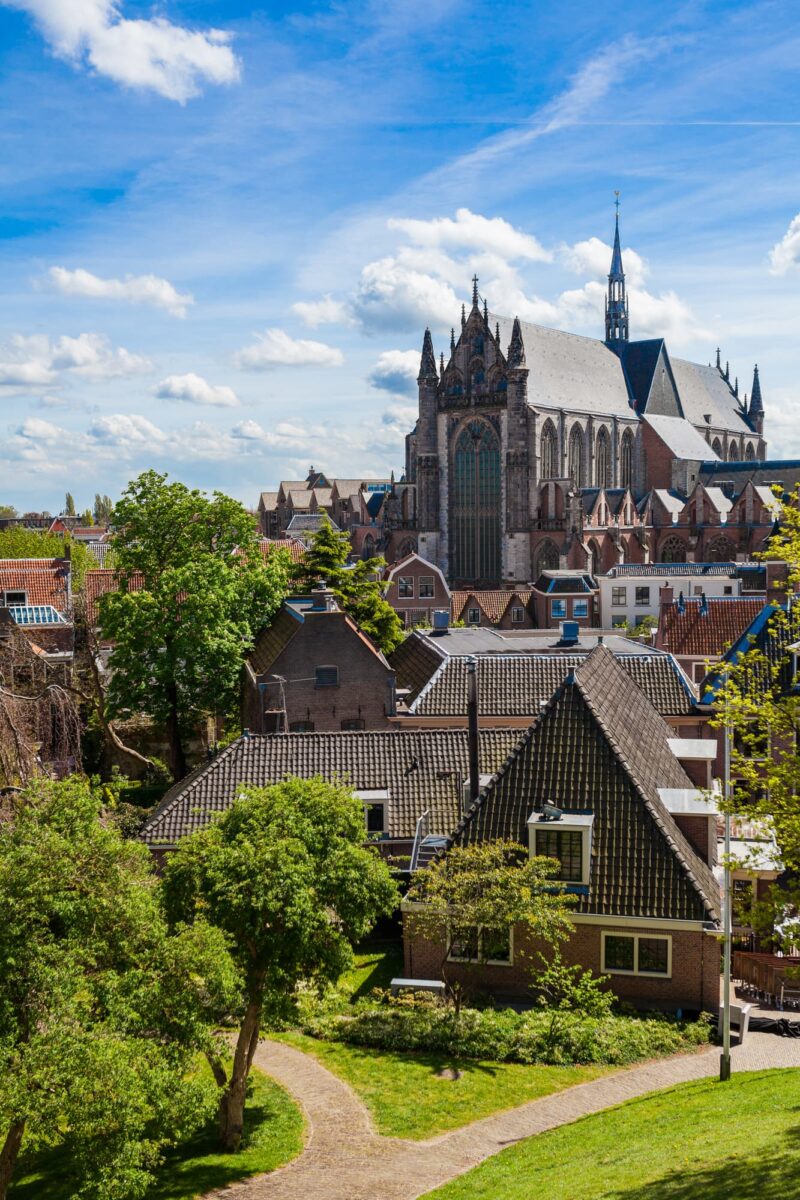
There are surprisingly many museums in this town, amongst them the Rijksmuseum van Oudheden (National Museum of Antiquities) and the Naturalis (National Museum of Natural History). The Rijksmuseum has tons of ancient Greek, Roman, and Egyptian art; all of the pieces are beautiful and amazing to see.
The Naturalis is great for science lovers as it even has one of the most complete T. rex skeletons in the world. You can also visit the Hortus Botanicus, a botanical garden that is part of the Leiden University; it has many different species of flowers and trees from all over the world.
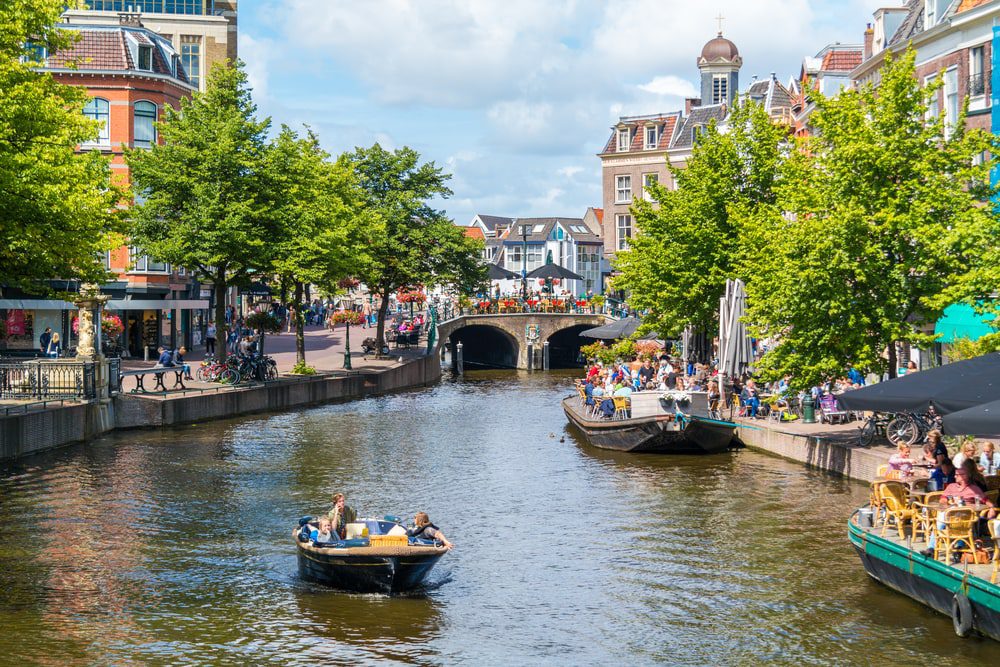
One of the most interesting things about Leiden is its colourful history. Aside from being a stopping point for the Pilgrims on their voyage to The New World, now known as the United States of America, the city also played a major role in the Dutch fight for independence from Spain. Today, it’s celebrated with the 3 October Festival that recognizes the city’s role in the Siege of Leiden between 1573–1574. By Constance at The Adventures of Panda Bear
8 Nijmegen
We love Amsterdam, but with so many really lovely places to visit in the Netherlands, it’s worth it to go a bit further afield. Nijmegen is in the eastern part of the country, close to the German border (when we visited, we actually biked there). It’s a pretty big Dutch city with a current population estimated at just over 175,000. It’s also a university town, so is quite lively especially when students are there.
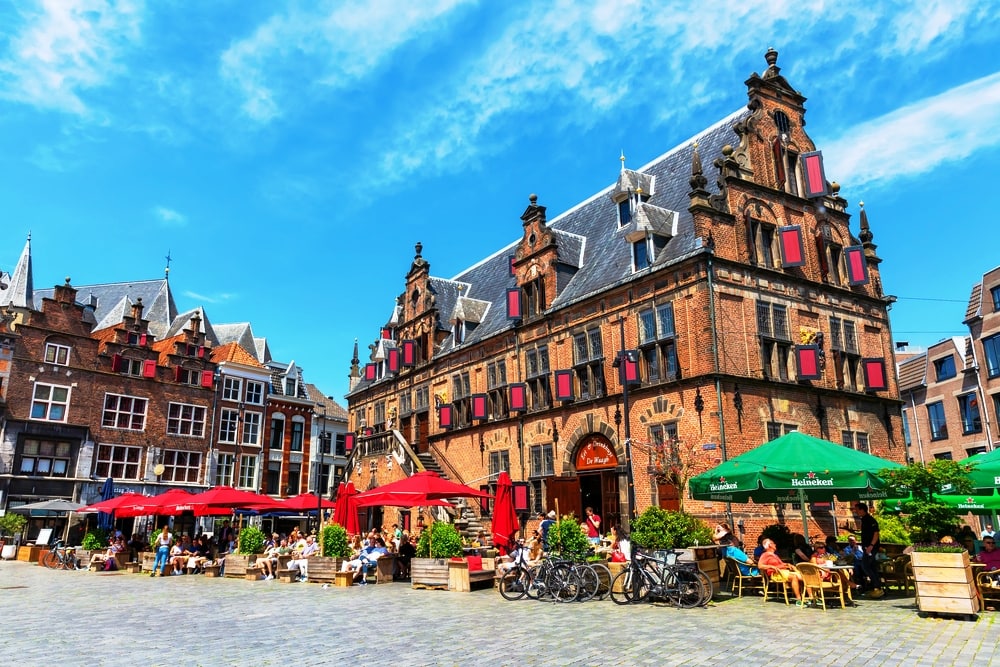
Though Nijmegen is only about an hour and 20 minutes from Amsterdam by direct train, it’s definitely off the tourist track. People in the Netherlands were very surprised when we said we were heading there. But we were so happy we decided to visit. It’s a really pretty city and has a lot to offer including Roman ruins (it’s also the oldest city in the Netherlands), relaxing parks, a scenic waterfront, and of course your typical charming Dutch architecture.
It’s also a great place to rent bikes and go for a longer cycle as it has very nice, accessible bike paths that take you further outside the city. We thoroughly enjoyed spending a few days there and would definitely return. So if you’re visiting the Netherlands and want to explore places beyond Amsterdam, give Nijmegen a shot. By Sarah at Travel Breathe Repeat
9 Helmond
Imagine a life beyond the canals of Amsterdam. Imagine streets, that are empty and where you can actually cycle. And imagine a little alley along the canal which is full of bars and restaurants with terraces facing the water. Well, you might have just arrived in the cute little town Helmond, which is located in the region Brabant and just a quick drive from Eindhoven.
Helmond has once been an industrial city with lots of factories and big businesses exporting goods to the entire world. Today, one of the former factories has been reformed into an amazing building with art galleries, a cinema and a cosy restaurant – and this is exactly how you can imagine Helmond. It is small, it is romantic and it is full of little surprises that you might have not expected.

In the centre of the city, you’ll find a city castle which is not only perfect for kids as it is super interactive but also great to hear a little about the history of this area of the Netherlands. The day here can be best spent on the bike. Cycle along the canals, have some ice cream and explore the surrounding park. Also, you can visit the neighbouring town Brandevoort which looks a little as if it was taken out of the Truman Show. Above all, Helmond and its surrounding areas are a great place to get a glimpse of Dutch daily life off the known cities, such as Amsterdam. By Clemens at Travellers Archive
10 Gouda
Gouda is 1 hour from Amsterdam but can be easily explored in a day. Gouda was much livelier and more crowded than expected. The main square had cafes and pubs surrounding it. In the middle of the plaza, there are booths set up selling everything from Stroop Wafel and cheese to pottery and jewellery.
Check out the Traditional Cheese Market held every Tuesday morning in the middle of the square! Farmers and traders negotiate deals and huge quantities of cheese are available for purchase. The variations of yellow and orange cheeses each provide a different aroma and taste.
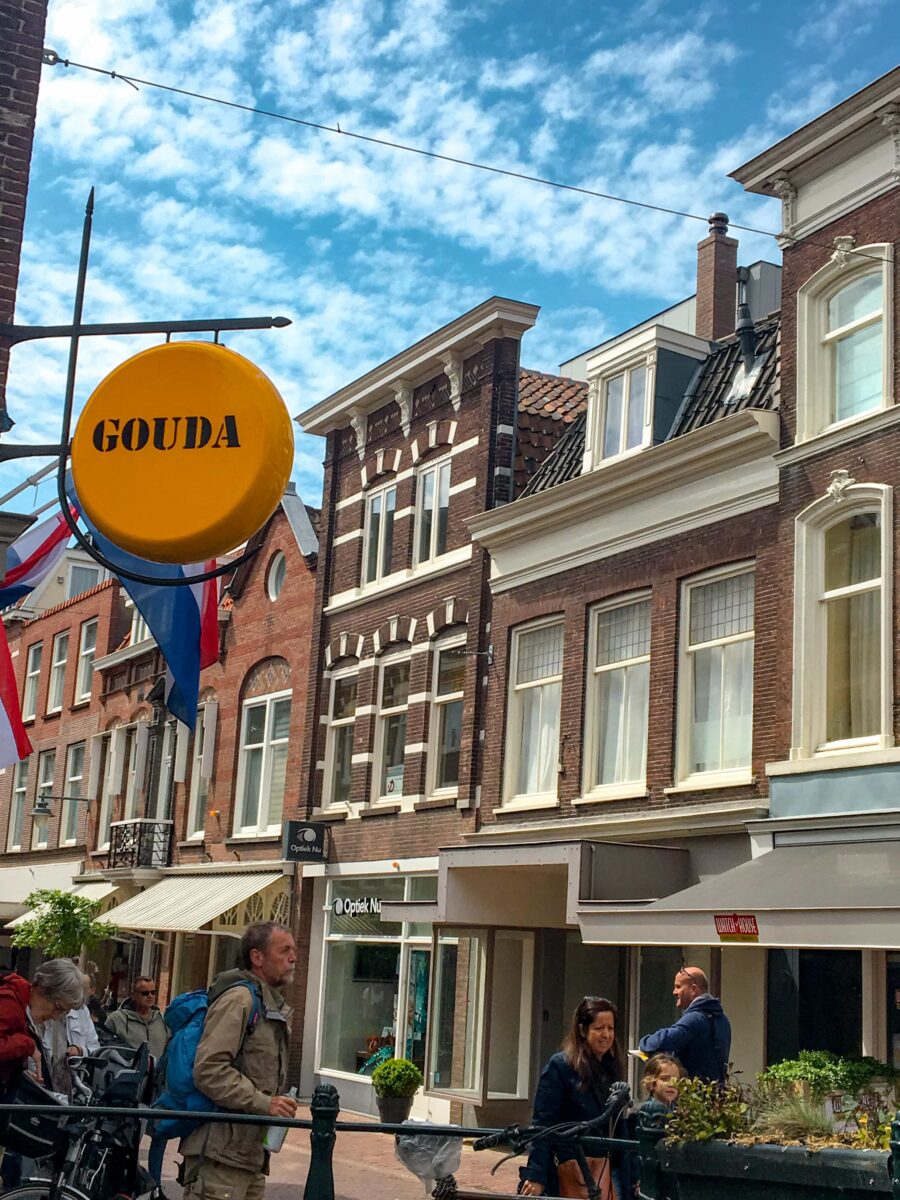
The architecture of the churches are also something to admire. St. John’s church was built in the 15th century and dedicated to John the Baptist. It’s just around the corner from the main plaza.
Also in the main square is the Gouda Stadhuis, resembling the Disney Castle and constructed in 1448. The town hall is one of the oldest in Holland and is illuminated in various colours for light shows that are sometimes performed.
If you are up for a little side trip, visit a working cheese farm located south of Gouda near the De Lek river. The farm is called Kaasboerderij Jongehoeve and guided tours are offered.
Easily stroll the whole canal ring whilst enjoying the architecture and café life. Like any good town in Holland, Gouda, too, has a windmill. It no longer produces flour but it still rotates. By Maegan of The Wanderlust Dietitian
We’re not dead yet. Travel stories from the over 50’s – we have more money and have more fun.
11 The Hague – Den Haag
Hague is a lovely city to visit. As a resident, I’m a little biased, but even before this, I loved visiting this lovely city. As the former capital of the Netherlands, this city has a lot of culture to offer to visitors from the world-class artwork at the Mauritshuis to the stunning historic building of the Binnenhof, where the Dutch Parliament is held.

The city centre is quite compact, which makes it perfect for a long stroll around the cute independent shops in the city centre. People interested in government and the UN will want to visit the Peace Palace, the ICC (The international criminal court), as well as the Yugoslav Criminal Court to view the buildings that the Hague is most famous for internationally. Most people think that these hearings are held in one building, however, the hearings are spread out across the city depending on the subject of the hearing.
It’s also very easy to take the tram to the beach at Scheveningen is the most famous beach in Holland. Out here, you’ll find a lovely pier, a cute fishing village, and a stunning former bathhouse (turned hotel). Although I’m not a beach person, I’ve been charmed by this city so much so that it has a laid-back vibe that you can’t find in Amsterdam.
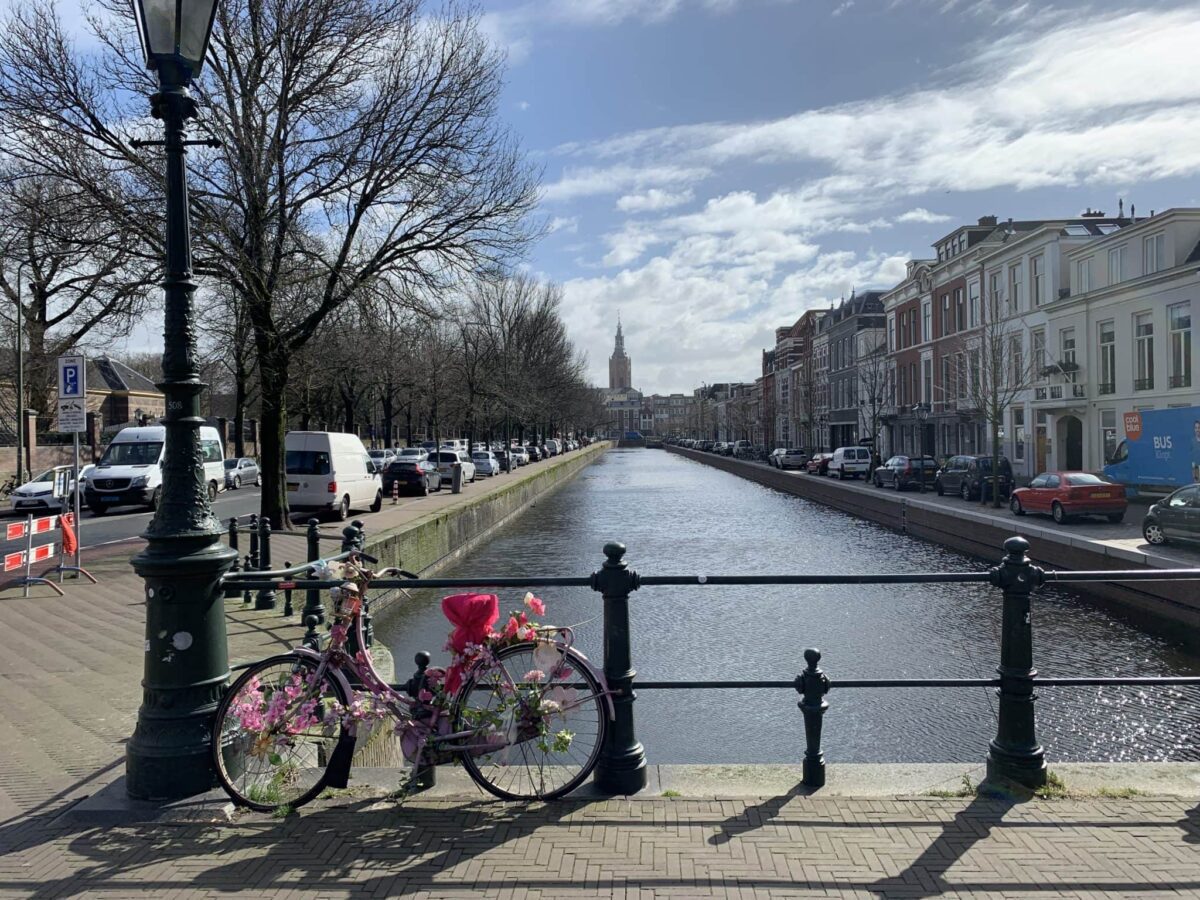
People are very friendly and as nearly 40% of the population is foreign-born, you certainly have an international atmosphere in the city that isn’t found in other cities. It’s also possible to find many kinds of difficult-to-find international food here as a result–and visitors will feel welcome. You’ll likely hear someone speaking your language on the street when you’re in the centre! By Karen at Wanderlusting K
12 The Lakes of Loosdrecht
If you are looking for an off-the-beaten-path destination in The Netherlands, The Lakes of Loosdrecht are a great choice.
It’s a nature reserve situated between Utrecht and Amsterdam (about half an hour’s drive). In former days it was a peat bog that was too wet for farming. They dug canals to the nearby Vecht river to solve the problem and to create way fields. In the 16th century, peat was harvested for turf. Because of this, huge lakes and many canals were formed. It’s a great place to escape the hustle and bustle of city life.

Another great way to explore the region is to rent a riverboat. We went for a cruise on the Vecht with La Vita è Bella. When the weather is nice, you can sit on the aft deck. In case of bad weather, you can sit inside. During this cosy cruise, you pass the most magnificent houses and canal boats. It’s clear that it’s a place for the happy few. The landscape is breathtaking. The captain is a great guide and he takes good care of his passengers. Snacks and beverages are provided. By Wendy of World Wide Wendy
13 Zaandam
“Zaandam is a charming city with about 70 000 inhabitants. It’s situated close to the famous Zanse Schaans and it’s easy to get here by train or bus from Amsterdam, which makes it a great day trip. Zaandam is especially famous for the “lego hotel” next to the railway station. It’s one of the coolest hotels in the world, and a reason alone to visit Zaandam.
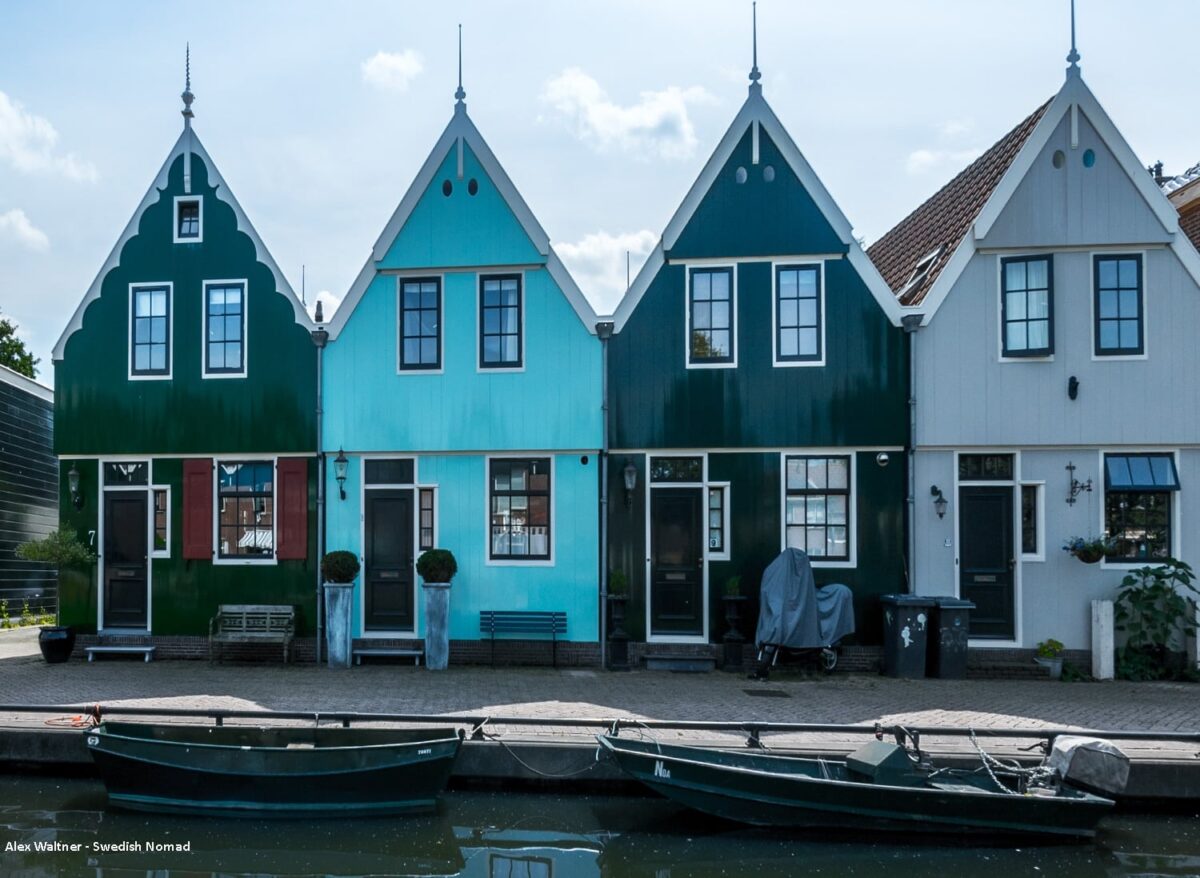
However, there is more to this charming city than just a unique design hotel. During the Dutch golden age, Zaandam was a big milling centre. It was a huge industry where the woodmill saws processed Scandinavian woods for ships and paper industries. The city was leading during the first industrial revolution in the Netherlands.
Another unique fact about Zaandam is that the first Mcdonald’s in Europe opened here in 1971. The football club AZ Alkmaar is founded in Zaandam too. By Alex from Swedish Nomad
14 Utrecht
If you thought you saw a lot of Miffy (Nijntje) souvenirs in Amsterdam, wait ’til you get to Utrecht. The little rabbit is on every kind of trinket you can think of – keyrings, vases and even clogs. After all, Utrecht was where her creator, the late Dick Bruna, lived most of his life. Adult fans can view a collection of his original works and tools in a recreated studio at the Centraal Museum, while there is also the Miffy Museum for children to explore in the building next door.
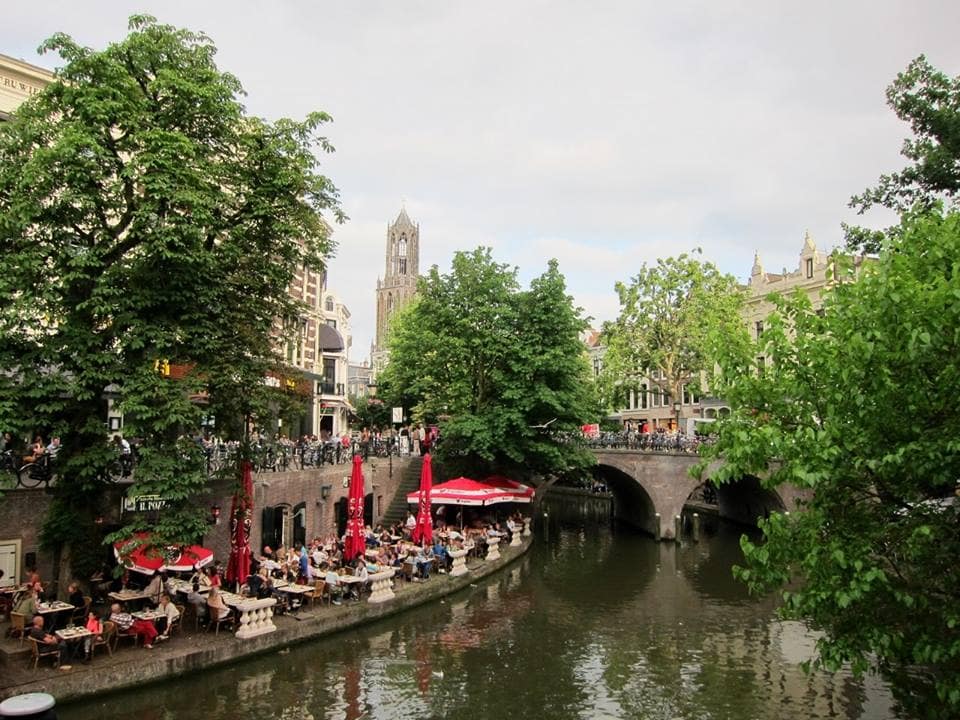
Besides Bruna, Utrecht is also famous for the works of the 20th-Century De Stijl movement. I’d gone there to see the Rietveld-Schroeder House. Gerrit Rietveld designed it according to De Stijl principles, using only primary colours, greys and strong black vertical and horizontal lines.
It’s an easy ride from the Centraal Museum on a rented bicycle and it’s difficult to miss such a distinctive building in a neighbourhood of uniform brick houses. To see the inside of the house, you need to reserve a spot on a guided tour. You won’t regret seeing how bold and practical is, especially for a 90-year-old building.
Besides modern-era buildings, numerous Gothic churches fill the city thanks to Utrecht’s former position as the religious centre of the Netherlands. Chief of these is the Domkerk, which has stood separated from the Domtoren (tower) ever since the nave connecting the two collapsed in 1674.
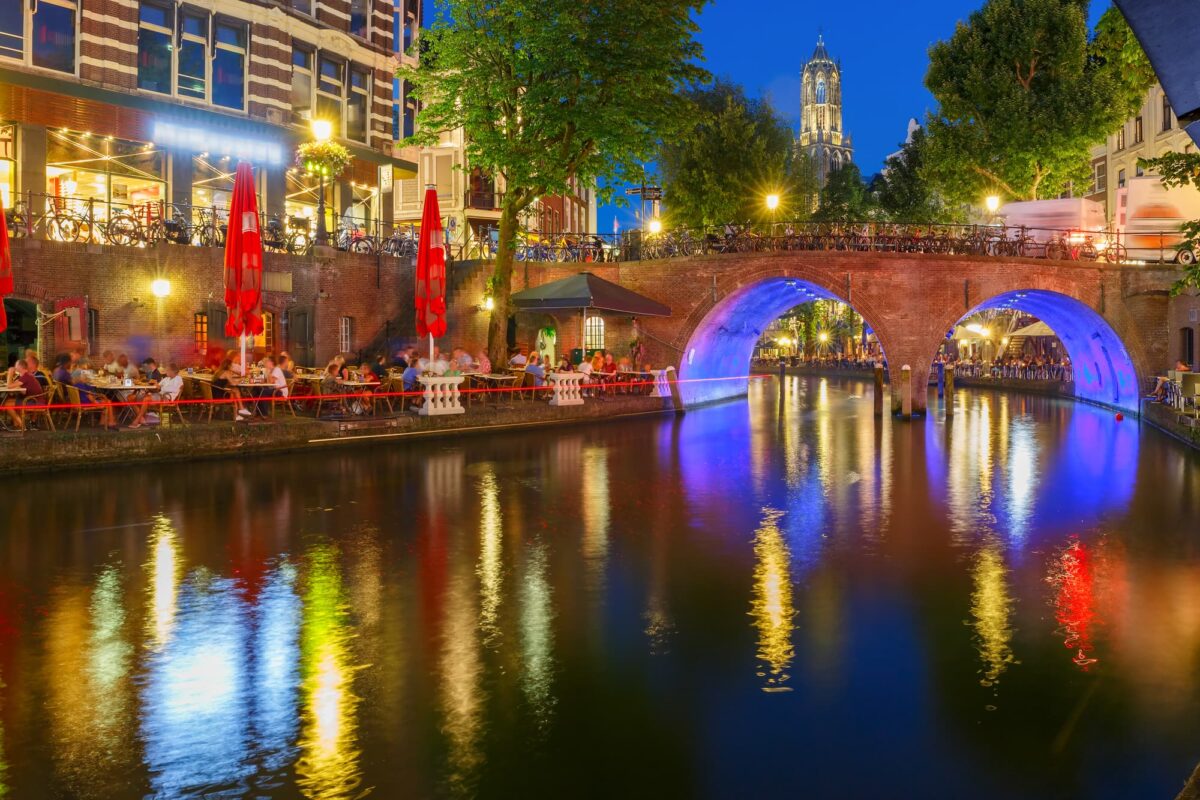
For a bird’s eye view of the city and the other churches, it’s 465 steps to the top. After a day of exploring the city’s icons, the Oudegracht is an excellent place to relax. What’s unusual about this canal is that the water level is much lower than the street level, so you can climb down and find more restaurants and bars in former cellars on the water’s edge. Utrecht is but a short train ride from Amsterdam, yet the atmosphere is much more laidback, especially when its student population is out on the town. by Nicholas from Rambling Feet
15 Groningen
Tourists rarely visit Groningen, which, as far as I’m concerned, is one of its greatest charms. A small town of about 200,000 residents, Groningen is in the northeast of the Netherlands, making it a great stop on your way from Amsterdam to, for example, Hamburg in Germany or anywhere in Denmark. Despite its small size, Groningen is a vibrant town because it is home to the University of Groningen, attracting students and scholars from all over the world.

Groningen has a bit of everything: charming narrow streets around the university and the Aa River (now more a canal), quirky shopping on the Folkingestraat and on market days on the Grote Markt, historical sights at the Martinitoren (make sure to climb it!) and the Scheepsvaart (maritime) museum, cutting edge art and architecture at the Groninger Museum, and clubs with live music or DJs till the early morning hours in the Poelestraat area.
Groningen is particularly known for its innovative traffic plan. Cars are not allowed into the centre of town, so if you want to cross the city, you have to drive outwards, circle the centre and then drive back in. Then you still need to find parking and walk the rest of the way.
This means it works out faster to take a bicycle to get around, and everyone does just that. To get a feel for the city, do the same: rent a bike and explore. Because of its small size, on the other hand, it’s also very walkable, but watch out for bikes! For a complete walking tour of Groningen, good for a couple of hours or a whole day, read Groningen Walking Tour. By Rachel Heller from Rachel’s Ruminations
16 Rotterdam
When most people think of visiting the Netherlands, the first place on the list is normally Amsterdam. However, there is something cool about the country’s second city that too many people miss out on. So while the hoards are fighting their way along the canals of Amsterdam, do the smart thing and visit Rotterdam instead.
The city is one of the best places in Europe to see amazing modern architecture and there are loads of fun and interesting things to do. You can even rent a Hot Tub Boat from the Vessel 11 lightship and sail around the busy city centre and feel like a rock star. One of the most interesting places to visit in Rotterdam is the stunning Cube Houses. Designed by the famous architect Piet Bloom, they are located right above the Blaak underground station. In total there are 38 small cube houses, as well as 2 super cubes which are now part of a hostel that you can even stay in.
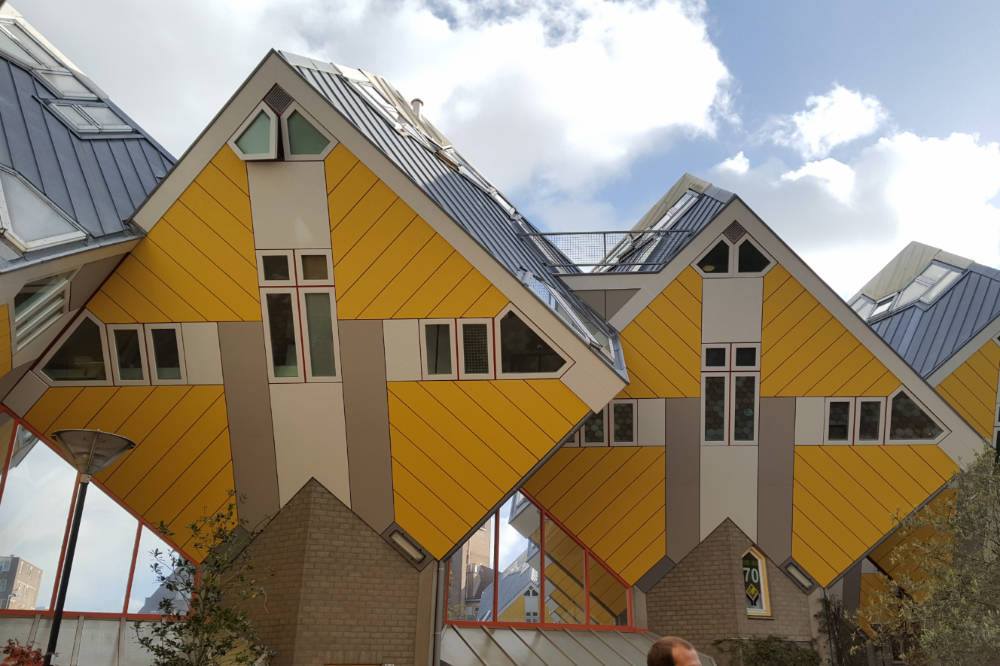
For the best views of the city, take a ride to the top of the 185m high Euromast. You can also eat dinner in the restaurant at 96 metres and even stay the night in the Euromast suites at the 100-metre mark. Other architectural marvels include Europe’s first high-rise building, the Witte Huis, Rotterdam Centraal Station and the Erasmus Bridge.
Rotterdam also has a fantastic maritime history and the city’s port is the largest in Europe and until 2004 it was the largest in the world. The sea is at the very heart of life in this vibrant city and the Maritime Museum is a great place to find out more.
The museum dates back as far as 1874 and includes a new Offshore experience that transports you to life on an oil rig in the middle of the North Sea. When you are feeling hungry. the enormous Markthal has every type of cuisine under one beautifully decorated roof. It’s a great place to chill out and enjoy the atmosphere of this exciting city. By John of From Real People
17 Giethoorn
Giethoorn is well worth visiting it is a unique little town and one of the most beautiful cities in the Netherlands where you won’t find any cars or roads: it’s a car-free village. Even many of the houses can’t be reached by road and the mailman has to deliver the mail by punt. The nickname for Giethoorn is ‘the Dutch Venice” or the Venice of the North.
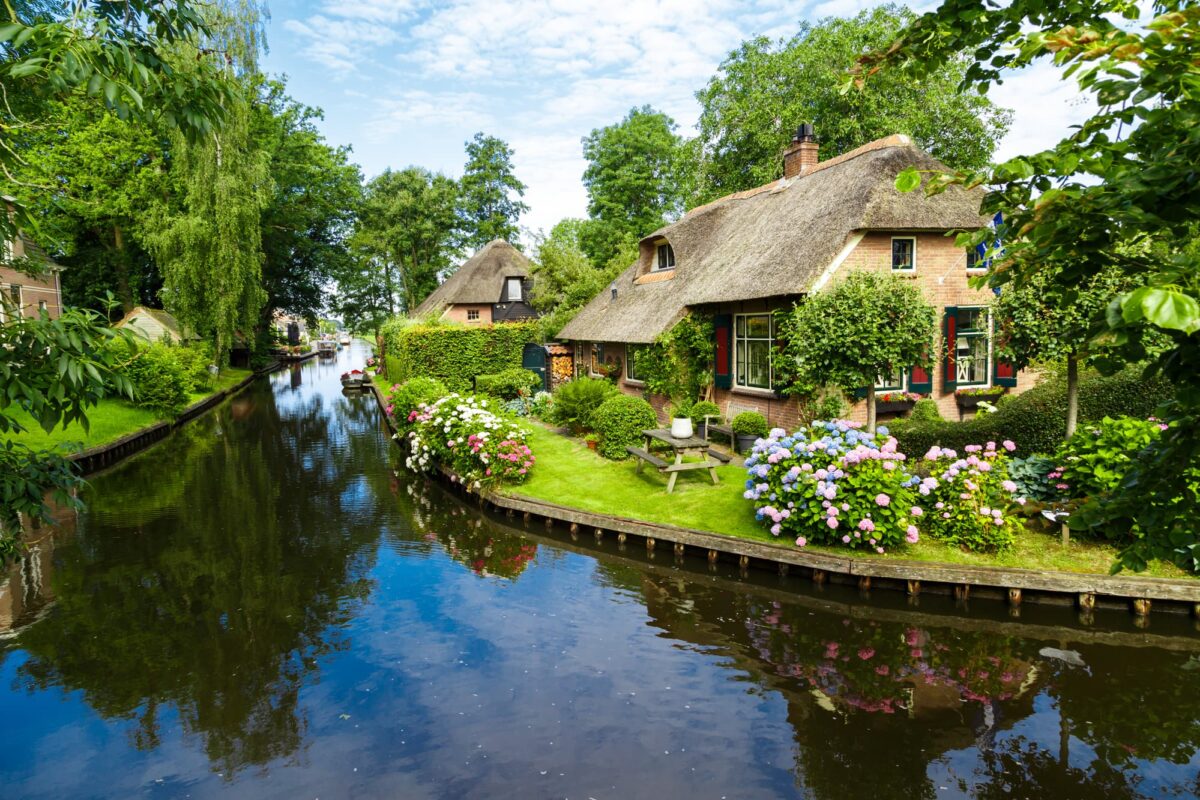
In Giethoorn you can partake in activities such as going on a boat tour to explore the town, but you can also visit a farmhouse, buy cheese at the local cheese shop or enjoy a beer at one of the canal-side restaurants or cafes. There are also footpaths beside the canals that are perfect for walking or cycling.

Giethoorn is unlike any other Dutch city. Although this little fairytale town looks very peaceful, with cute little houses, gorgeous canals and lots of bridges, it has become more and more popular with tourists all over the world. That’s why it’s wise to choose the time of visit wisely to experience this magical place in peace. Don’t go during holidays and preferably during a weekday.
Is Giethoorn as romantic as Venice? You should come and decide for yourself! by Lisanne of Chapter Travel
18 Keukenhoff Gardens
Tulips are one of the most important symbols of the Netherlands, and therefore if you have the chance to visit Holland during the spring months, you would surely like to visit a tulip garden, where you can enjoy the colourful spectacle of these beautiful flowers.
One of the most accessible ways of experiencing a real tulip garden is by visiting Keukenhof Garden in Lisse. This garden is open during the tulip blooming season usually between the 2nd half of March and the end of May. Keukenhof Garden is situated in 32 hectares, and you can see more than 800 different types of tulips of all sorts of colours.

Every year an impressive amount of 7 million tulip bulbs are planted in the garden. In every flowerbed, you can see a small sign, which explains the name of the flower composition and the exact flower type planted there. One would never imagine that there could be so many kinds of different tulips in the world.
In the park, you also have the chance to visit a traditional Dutch windmill, and during the day different concerts contribute to the entertainment of the visitors. In the vicinity of the park, there are large tulip fields, and you can rent a bike at the park entrance to explore the area.
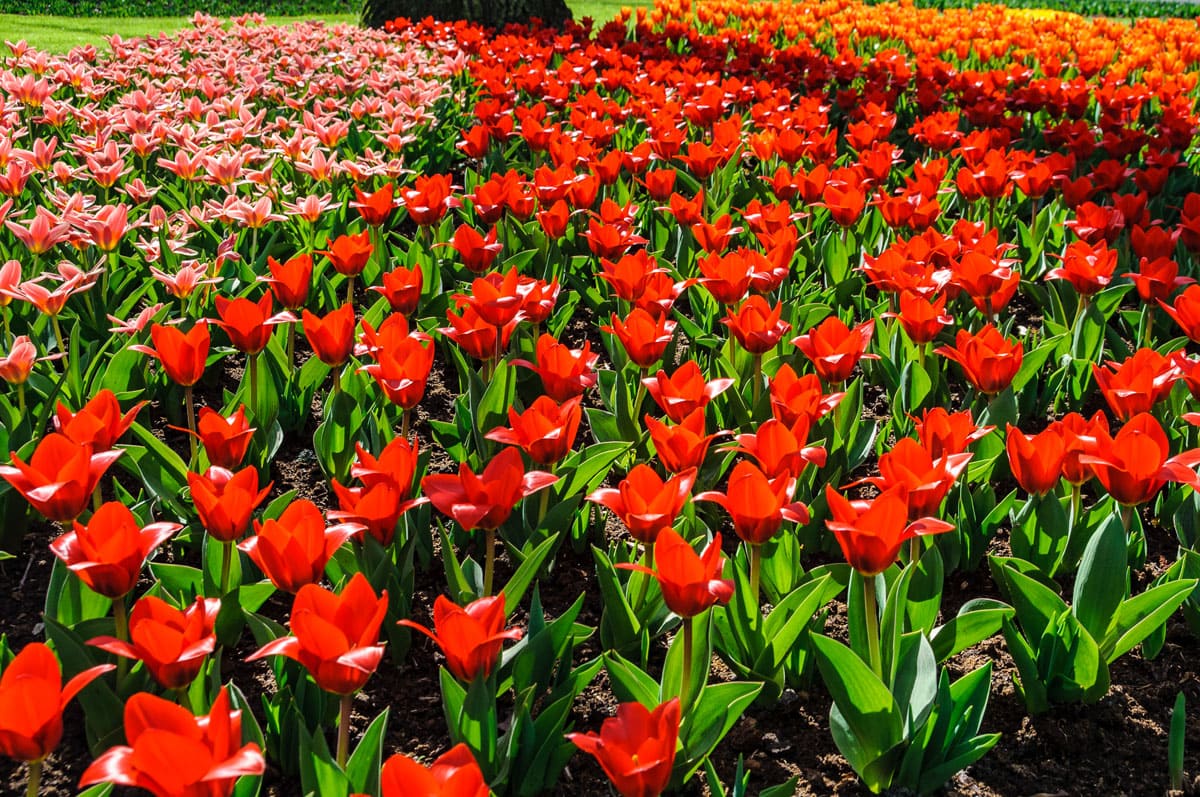
The huge botanical garden in Keukenhof is easily accessible from Amsterdam taking a train to Amsterdam Airport and then changing to bus Nr. 858 will leave you at the entrance of Keukenhof Park. By Gabor of Surfing the Planet.
20 National Park de Hoge Veluwe
The De Hoge Veluwe National Parks is one of the largest continuous nature reserves in Holland, measuring 5,400 hectares, or 13,343 acres. Hoge Veluwe is an important sanctuary for birds and has long been a popular destination for bird watchers. The park is not only celebrated for its natural beauty but also for the world-class Kröller-Müller Museum, which houses an exceptional collection of art, including works by Vincent van Gogh.

The easiest way to explore these wide lands is by bicycle. De Hoge Veluwe National Park has 40 kilometres (25 miles) of cycling paths and 1,800 bicycles for free use. These white bicycles can be found in various locations throughout the park.
21 Zaanse Schans
Just north of Amsterdam, the Zaanse Schans is an eighteenth-century village with traditional houses that are still private residences, windmills, warehouses and workshops. Stroll past the bakery museum and enjoy the smell of fresh cookies, or take a look at the warehouse where clogs are made. You should be sure not to miss the cheese factory, pewter foundry and various windmills. The Zaanse Schans is a unique part of the Netherlands, full of wooden houses, mills, barns and workshops.
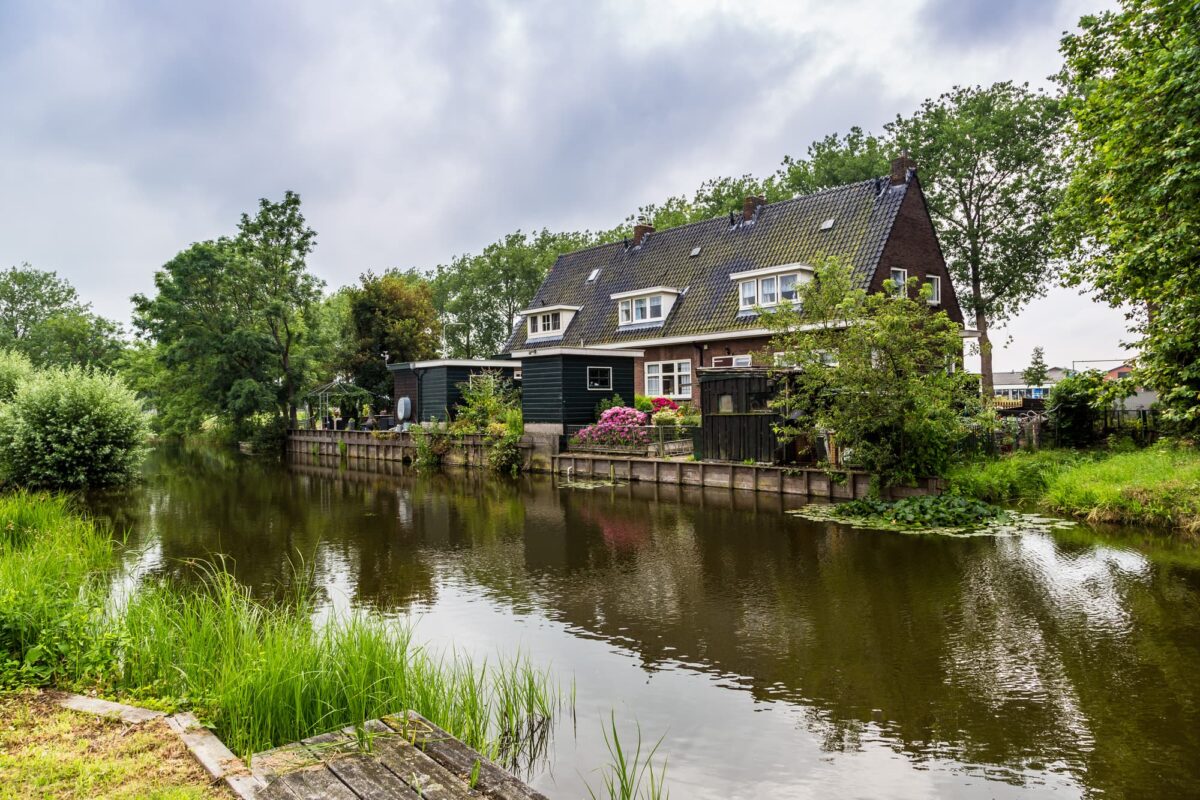
22. Den Bosch
Den Bosch is renowned for its medieval city center, characterized by the magnificent Gothic St. Janskathedraal, distinctive tunnel canals, and a plethora of charming historic streets. Additionally, Den Bosch proudly claims the distinction of being the hometown of the renowned Dutch Renaissance artist, Hieronymus Bosch.
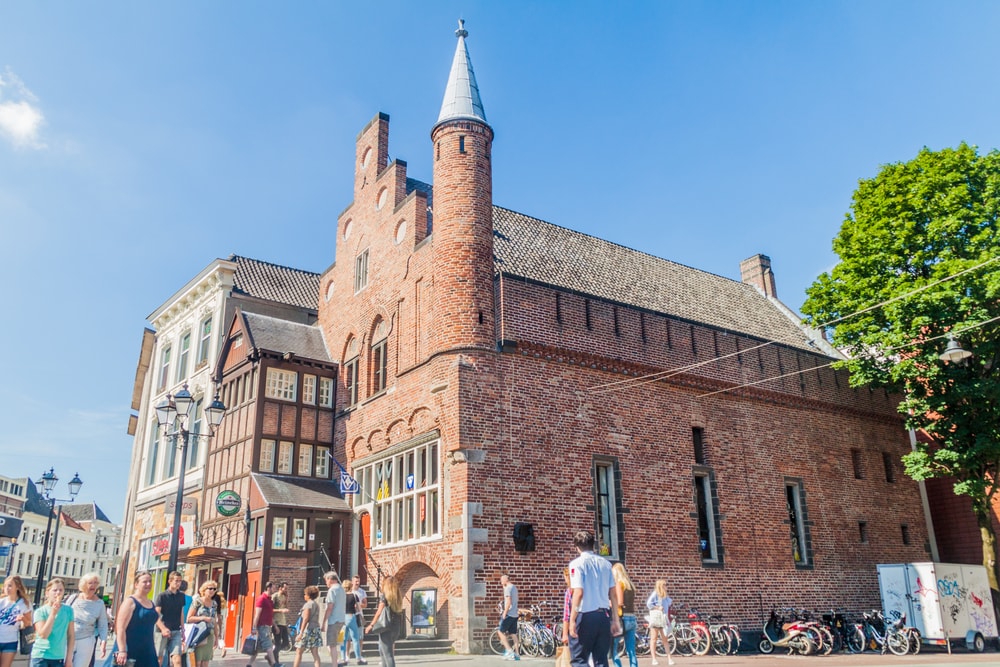
23 Visit Valkenburg with castle ruins and caves
Valkenburg is a town located in the southern part of the Netherlands, in the province of Limburg. It is known for its historical charm, including ancient fortifications, a picturesque town center, and the Valkenburg Castle ruins. Additionally, Valkenburg is famous for its marlstone caves and the annual Christmas markets held in caves, attracting visitors from near and far. It’s a popular tourist destination due to its rich history, scenic surroundings, and various attractions.

The Netherlands is a country full of hidden gems waiting to be explored. Although Amsterdam may be the most popular destination for tourists, there are countless other cities and attractions worth visiting. From wandering through picturesque villages like Giethoorn and Marken to exploring historic cities like Utrecht and The Hague, there is something for everyone in the Netherlands. By venturing outside of Amsterdam, travellers can truly immerse themselves in Dutch culture and experience all that this beautiful country has to offer.
Don’t forget to learn what a Dutch Coffeeshop is before you visit.
What to eat in Amsterdam: A local’s guide
So what is your favourite part to visit in the Netherlands?
You might also like to read about moving abroad
My Move to Europe – 21 personal stories
Pros and Cons of Living in Barcelona
20+ Pros and Cons of Living in Spain
The Pros and cons of living in Sweden
Pros and Cons of Living in France
Pros and Cons of Living in Portugal: On the Algarve
Pros and Cons of Living in UK: Expat Life in England
Tips for Canadians moving to Ireland
How to move to the Netherlands From Asia
Discover the Pros and Cons of Living in Austria
